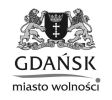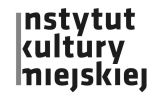Jacek Niegoda
God Helmet
object, site-specific installation, 2014
Tesla (T) is the SI derived unit of magnetic flux density.
0,0001 T marks the impact of magnetic field on the human brain under which a human being can experience an upsurge of religious feelings.
This parameter is referred to in his project by Jacek Niegoda.
In the Laboratory of High Voltage of the Gdańsk University of Technology, he deals with the question of high voltage that appears between mysticism and rationalism, between faith and knowledge. The essence of this conflict is described in the famous claim “If God did not exist, it would be necessary to invent him” by Voltaire, who was a French philosopher of the Enlightenment and a stalwart of the rational mind.
Contemporary neurology, a science which investigates the way the human brain functions, has discovered that owing to the power of magnetic field it is possible to stimulate mystical sensations in the mind, and even trigger the feeling of the “presence of the Creator”. One of the devices used to induce such sensations is the “God helmet” – used by Michael Persinger in his experimental research in the field of neurotheology. His investigations were to prove that every kind of spiritual experience can be provoked artificially in the laboratory by stimulating specific parts of the brain. The device set on the head of a participant stimulates the brain with an electromagnetic field.
To build the God helmet, Persinger used a motorcycle helmet, which was modified in such a way to make it possible to locate 4 sets of solenoids around the head. The participants were invited to sit down in a comfortable chair, apart from the helmet they were also given an EEG device and had their eyes veiled with halves of ping pong balls filled with cotton wool so that they couldn’t see anything.
The participants described their sensations as real experiences, and not as something that they merely saw (hallucinoid experience). 80% of the participants had the impression that there was someone behind their back during the experiment. Religious people often thought it was God, guardian angel or a dearly departed close person. Some participants cried, others claimed that they saw demons.
In his project, Jacek Niegoda asks a perverse question – can today’s neurotheological experiments serve in the future as a way to electrically evangelize the doubtful.
Jacek Niegoda (b. 1972), lives and works in Gdańsk.
Jacek Niegoda deals with video and artistic actions, which often feature humorous elements and surprising comments on reality. He often refers in his works to the relations between authority, technology and art.
Graduate of the Academy of Fine Arts in Gdańsk (studio of Prof. Grzegorz Klaman and the Studio of Intermedia of Prof. Witosław Czerwonka). He has collaborated with the Wyspa Gallery and the Open Atelier in Gdańsk, which was transformed later into the Centre for Contemporary Art Łaźnia. Co-founder of the Wyspa Progress Foundation. In 2005, awarded a distinction at the 11th International Media Art Biennale WRO 05 in Wrocław.
In 1995, alongside Mikołaj Robert Jurkowski, Rafał Ewertnowski, Piotr Wyrzykowski, Maciej Sienkiewicz and Arture Kozdrowski, he established the Technical Culture Central Office (CUKT). In 2000, he was one of the initiators and creators of the project and character of Wiktora Cukt – a virtual candidate to the office of the President of Poland.
Since 2000, he has collaborated with Julita Wójcik within the artistic duo Nie-Wójcik.
His projects have been presented in many major institutions in Poland and Europe.





